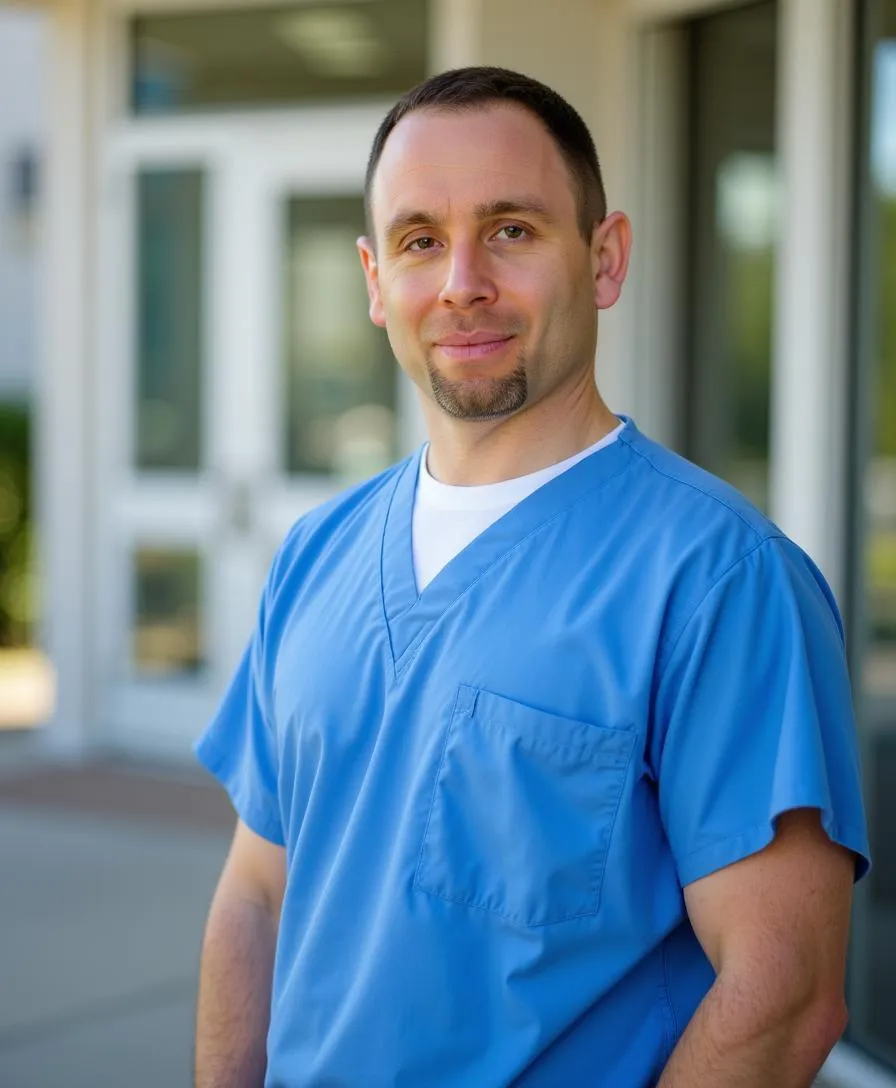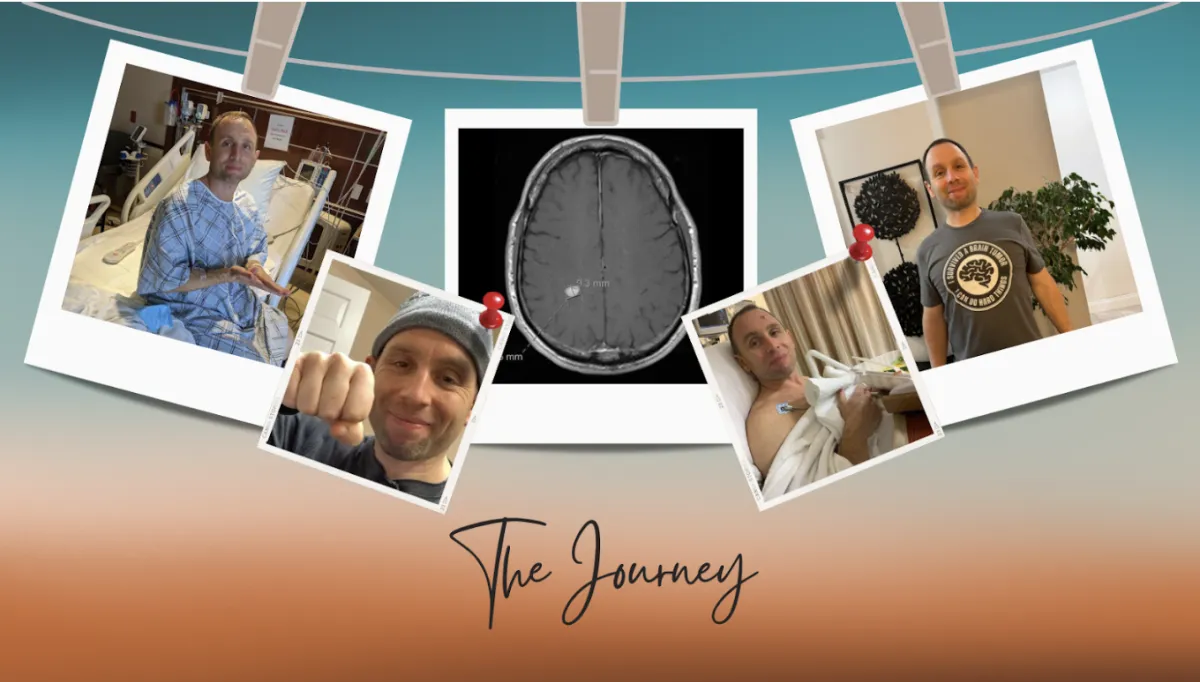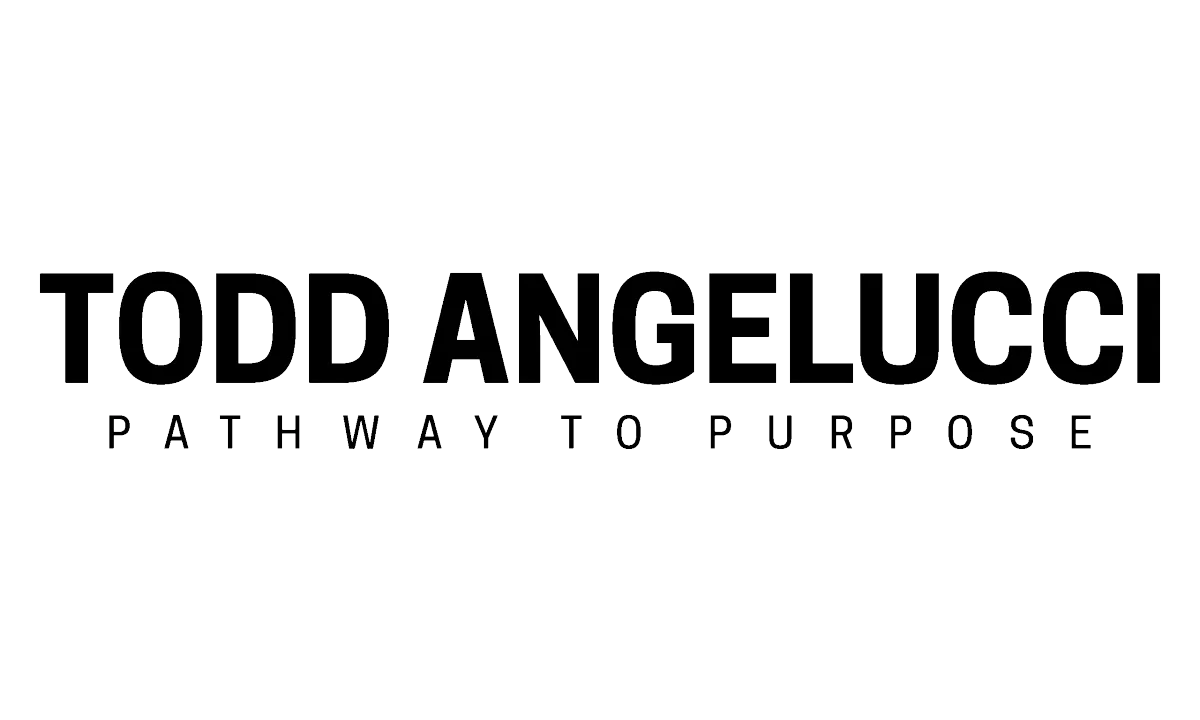ABOUT ME

TODD ANGELUCCI
From performance to purpose. From burnout to breakthrough.
For most of my life, I did what many caregivers and leaders do—I showed up strong, held it all together, and quietly carried the emotional weight of others.
I spent over three decades in nearly every corner of the nursing world—ICU, OR, med-surg, medical device sales, education, and leadership. From the bedside to the boardroom, I witnessed both the beauty and the brokenness of healthcare. I watched good people—men and women—crumble under pressure, lose themselves in the roles they were playing, and silently ask:
“Is this all there is?”
Then came the wake-up call.
A brain tumor.
A moment that stopped everything—and started something deeper.
It wasn’t just about survival. It was about identity.
Not just what I did, but who I had become in the process of doing it all.
That diagnosis unraveled the part of me that lived for approval, perfection, and silent suffering. It forced me to ask deeper questions—not just about healthcare, leadership, or even mindset—but about identity, purpose, and how we’re wired to lead from within.
That journey led me to create the Life-Mind Map™ and the Restorative Masculine Integration Theory (RMIT)—two frameworks designed to help men reconnect with their authentic power, heal subconscious patterns, and show up with clarity, courage, and emotional mastery.
Today, I mentor professionals, , leaders, and men and women in high-responsibility roles who quietly feel stuck or misaligned. My work bridges neuroscience, emotional intelligence, and spiritual truth to help them reclaim purpose, rewire thinking, and lead from the inside out.

What I’ve learned—
and How I Help Others Transform from the Inside Out
Leadership without emotional clarity becomes performance. I help leaders find clarity so they inspire trust, not just results.
Helping others while abandoning yourself isn’t noble—it’s sabotage. I guide professionals to lead with wholeness, not depletion.
When identity becomes fragmented, disconnection and burnout follow. I help restore wholeness so leaders and teams operate from clarity, deep alignment, and authentic connection.
Healing isn’t about repair—it’s about awakening the design you were always meant to live. I help leaders and professionals rediscover purpose and thrive with clarity and connection.
The Outcome: Resilient, whole leaders and professionals who live aligned, lead authentically, and transform culture from the inside out.
I work with both men and women
because the healing of one affects the healing of the other.
For women, I offer a grounded space where they feel seen, heard, and safe—not judged, managed, or "coached" in a performative way. I don’t try to solve or correct—I reflect, ask better questions, and help clear the mental and emotional noise so they can reclaim their voice, values, and self-worth.
For men, I help them shed the performative layers, reconnect to emotional truth, and lead from grounded masculine integrity—not control, suppression, or avoidance.
And for both, I hold space for the deeper work: identity, purpose, patterns, and healing.
This isn’t just coaching.
It’s restoration.
It’s leadership reimagined—from the inside out.

We Do Hard Things - The Journey
In the tumultuous year of 2020, amidst the chaos of a global pandemic, I found myself facing the most profound challenge of my life—a challenge that would teach me the true meaning of resilience and forever change how I show up as a leader.
At first, the signs were subtle. Fatigue that felt heavier than usual. A peculiar weakness I brushed off as stress, dehydration, or simply the toll of working long shifts. I told myself, I can handle anything. That was always my story. Push harder, keep moving, take care of everyone else.
But my friends, colleagues, and doctor urged me to pay closer attention. If this persists, you need to get checked. I nodded but resisted. Until one autumn morning after a run, when I felt a strange, almost unexplainable sensation in my left hand. It was enough to push me past denial. I went to the ER.
Pandemic days made hospitals eerie. Masks everywhere, fear hanging in the air. I went through the motions of testing—blood work, scans, an MRI. The technician paused mid-test, saying the neurologist wanted contrast. Something inside me tightened, but I dismissed it, trying to stay calm in that narrow tube.
When I returned to the ER room, a doctor and nurse entered, faces carrying a weight I instantly recognized. I had seen that look before. I knew what it meant.
The doctor sat down, leaned forward, and said words I’ll never forget:
“You’re not crazy. You have a marble-sized tumor in your head.”
Time froze. My body moved before my mind caught up—I stood, walked to the far side of the room like I could somehow escape the sentence. A gut punch left me gasping. Tears slid down my face without permission. And all I could mutter, childlike, was: “This sucks.”
Then came the words that hollowed me out: “I’m sorry.”
Those two words felt like the sealing of a coffin. Not compassion, but finality. Not comfort, but closure. It was as if my life had already ended, as if I were already gone. In that instant, I grieved my future—the mornings I hadn’t lived yet, the conversations I’d still wanted to have, the dreams I thought I’d chase later. A version of me died in that room, and I felt the emptiness of it collapse over me like dirt on a grave.
I remembered how many times I had said those very words—“I’m sorry”—to patients and families when delivering news that shattered their lives. I thought I had been empathetic. But in that moment, hearing it spoken to me, I understood how hollow and powerless it could feel. No one could truly stand in my shoes. No one could carry the rawness of that moment for me. I was face-to-face with my own mortality, and it was mine alone to hold.
The journey ahead was brutal—fear, surgeries, depression, anxiety, the long silence of not knowing what life would look like on the other side. But that day in the ER had already planted something in me: a new way of seeing pain. Instead of running from it, I began to lean in, to ask questions I’d never dared before:
- What is this pain here to teach me?
- Am I doing God’s work here? What is my purpose here?
- What is my purpose here?
Pain became my teacher, not my enemy.
I began responding differently—to myself, to others. Instead of reflexively saying “I’m sorry” when people shared their struggles, I looked them in the eyes and said, “This is hard.” And then I added the words that had become my lifeline: “But we do hard things.”
That simple shift gave people permission to feel the weight of their pain while also reminding them of their strength. It gave me a mantra to cling to when I wanted to quit, when the darkness pressed too close. This is hard. But I do hard things.
Out of that journey, I launched a podcast to hold space for others navigating their own battles. I listened to stories of resilience, and in every one I saw the same truth: hardship is universal, but it doesn’t have to be terminal. Pain, when faced honestly, becomes a portal to growth.
But I didn’t stop at surviving my own battle—I dove headfirst into the deep inner work. I asked the questions that most of us are afraid to ask: Why am I here? What is this moment trying to teach me? What parts of me need to be dismantled so something greater can be rebuilt? In that raw place, I began to learn not only how to transform myself but also how to anchor into a greater purpose and use my pain as fuel for clarity.
I confronted the challenges I carried as a man and as a human being—the expectations, the hidden wounds, the ways fear and ego had shaped my life. I saw how this diagnosis had not just shaken my health, but my identity, my relationships, and my understanding of what true leadership really means. Out of that wrestling, I developed what I now call the Pathway to Purpose Clarity Map—a process to help people uncover what truly drives them, break free from the unconscious patterns that keep them stuck, and reconnect with their deepest “why.”
At the same time, I created the Restorative Masculine Integration Theory (RMIT), a framework born out of my own wrestling with mortality and manhood. RMIT reveals how suppressed and fragmented masculinity erodes our ability to lead, love, and live fully. It provides a path toward wholeness—toward reclaiming an identity rooted in authenticity, relational integrity, and what I call grounded leadership. This kind of leadership doesn’t rely on performance, status, or external approval, but on inner alignment and deep connection. It’s a way of leading yourself and others from the inside out.
Together, these frameworks—the Pathway to Purpose Clarity Map and RMIT—have become the backbone of my work. They emerged not from textbooks or theory alone, but from lived experience, sleepless nights, and the deep conviction that pain, when embraced, can catalyze transformation. Today, I use them to guide men and women into breakthroughs that reshape their lives, their relationships, and their leadership.
And here’s what I’ve learned—this wasn’t just about me surviving a brain tumor. The lesson is bigger. You don’t need a diagnosis to feel like part of you has died. Life will hand all of us moments that strip us bare—loss, betrayal, failure, change. Those moments can feel like endings, but they hold the power of beginnings.
That day in the ER, “I’m sorry” sounded like the end of my story. Instead, it became the beginning of my transformation. It taught me how to lead, not by avoiding pain but by embracing it. It taught me how to guide others, not with platitudes but with presence.
So now, when I sit with people in their hardest moments, I don’t flinch. I don’t rush. I don’t reach for easy words. I simply say:
“This is hard. But we do hard things.”
And together, we take the next step forward.

Measure Your Mindset
Unlock the Hidden Minds
Controlling Your Success
You’ve been trying to change your habits… but here’s the truth: you’ve only been working with part of your mind. That’s why change feels temporary.
The Habit Finder Assessment pulls back the curtain on the set of minds shaping your reality. Once you see the full picture, you can finally stop fighting yourself and start transforming from the inside out.
Copyright 2025. Todd Angelucci. All Rights Reserved.

